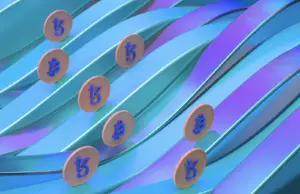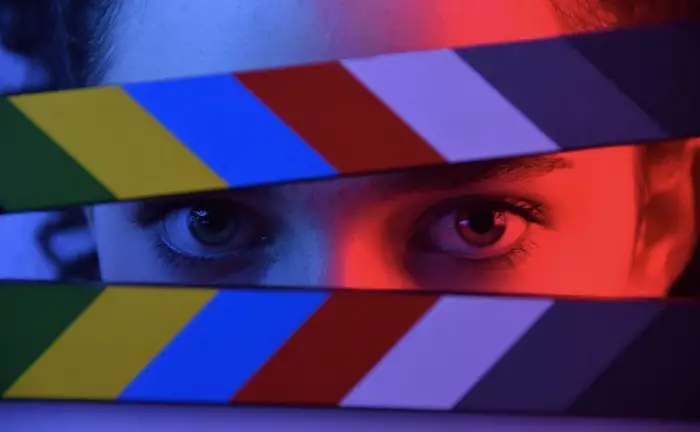
You may have heard of NFTs and considered investing in them. But how do do it? And what are the benefits and drawbacks? Before you begin investing in any asset class, it’s a smart option to familiarize yourself with it.
In this article, we will analyze the potential of NFTs, their role in the film industry, and what are advantages of investing in NFTs.
NFTs and the Film Industry: Making a Film as an NFT
Due to blockchain technology’s storage limits, it was previously impossible to release full-length motion pictures as NFTs or anything other than small video snippets.
Last October Zero Contact became the 1st Hollywood feature picture to be released in a non-traditional film format. Vuele.io, the studio’s own blockchain network for the film business, was used to distribute the movie and related items.
CurrencyWorks, the system’s supplier, reported that a total of $85,000 worth of NFT copies of the film had been sold. Every time one of these NFTs is purchased or sold, CurrencyWorks claims to collect a royalty. While a large return isn’t terrible, it pales in comparison to some of the most costly NFTs in the art world or the box office returns of the most popular films.
But there was a hitch to the sale of Kevin Smith’s latest picture, Kilroy Was Here: it wasn’t sold as an NFT. Previously, Smith had stated that the fortunate bidder would also have the rights to display, sell, and Livestream the picture (we haven’t found any news on the exact transaction price, though).

NFT Provides Funding for a Film Project
Selling NFTs to raise money for movie production is becoming increasingly popular among both experienced executives who want to disrupt conventional funding approaches and independent directors who just need money. The Forest Road Company has launched a $20 million NFT fund to assist indie filmmakers to monetise their material. Similar developments are taking place in other parts of the film business.
To make “the first feature film designed to be completely funded by minting NFT tokens,” Niels Juul, executive director of The Irishman, launched NFT Studios. Many of the NFTs include investor-style incentives, such as access to the first and second tiers of the platform.
Al Pacino’s child, Julie Pacino, generated approximately $100k by selling no-fee prints of her photographs to help fund her upcoming feature film, I Live Here Now, which is now in pre-production. Filmmakers may now acquire funds for their projects through the purchase of specific crypto assets on new NFT sites targeted to the sector, such as First Flights.
Filmmaking has become more “democratized” because of the possibility to raise money for studio releases via NFTs, according to Juul. An interested audience who are also our shareholders in the film is what NFT-based financing allows directors to discover, he says.
Sales of NFT Products
Merchandise sales are very definitely the most common form of financing new film premieres via NFT, however, this is not always the case. If you’re a fan of Quentin Tarantino, you’ll want to get your hands on some of the original handwriting screenplays and a commentary track from the Pulp Fiction filmmaker himself that was sold off last year. The first Tarantino’s NFT sold for $1.1 million, but the subsequent lawsuit from film company Miramax (alleging IP infringement and seeking to halt the sale) may be a forerunner of complex legal problems between creative types and corporations around NFTs.
In preparation for the launch of The Matrix: Resurrections last year, Warner Bros. unveiled a set of NFTs influenced by the movie, bringing The Matrix to the network. Dune and other famous films have followed the same steps. A collection of digital collectibles was launched by the producers of Ranveer Singh’s 83 towards the end of last year.
“Unlockable” NFT content, comparable to additional material on DVDs, may also fuel the next stage of NFT commercialization by making NFTs “active assets with mystery rewards,” according to some observers.

Pros of Investing in NFTs
NFTs are open to the public and anybody can invest
Tokenized assets may be invested by anybody. NFTs allow asset ownership to be transferred more freely and quickly among persons throughout the world.
It is easy to find good NFTs Projects
Some NFT projects already established themselves as the most interesting in the industry. Some of the top NFTs available are CryptoPunks, Azuki, Bored Apes, Invisible Friends, etc. Celebrities often invest in such NFT projects which makes them even more popular. If you choose such an established projects, the chances are that your investment will only go up in the value.
A Blockchain Ensures the Ownership of NFTs
An investor’s ownership of an asset is safer if they use blockchain technology to digitally signal ownership. The use of blockchain technology can also make asset ownership clear. NFTs are a chance to gain a deeper understanding of blockchain technology and small investments in tokenized assets can help investors learn more about the blockchain and diversify their portfolios.

NFTs Have a Bright Future
The future of non-fungible tokens looks bright. NFTs are unique digital assets that can be used in a number of ways, including as currency, game items, or digital collectibles. What’s particularly attractive about NFTs is that they can be stored on blockchain platforms such as Ethereum and Bitcoin, which gives users a high degree of security and permanence. With so many potential applications, and the high level of security, it NFTs could become the way for people to interact with the digital world.

[…] be released in a non-traditional film format. It was released by Vuele, also founded by Chell, and Film Threat reported that a total of $85,000 worth of NFT copies of the film had been […]
[…] Source : Read More […]
[…] Supply hyperlink […]